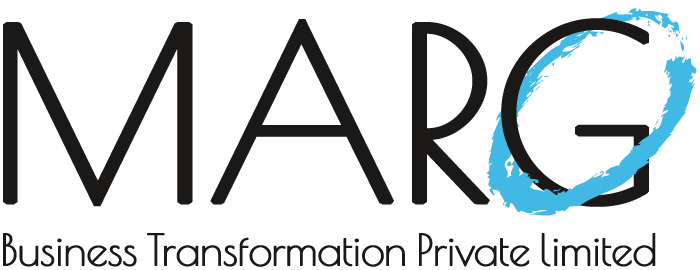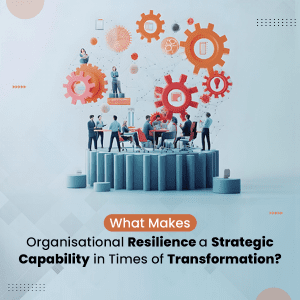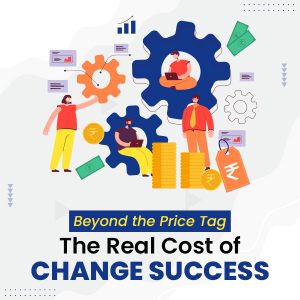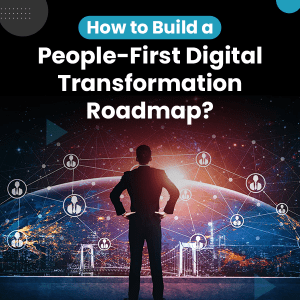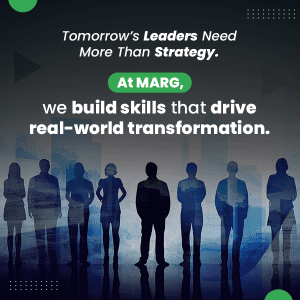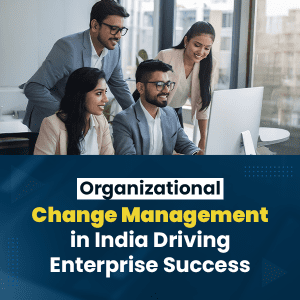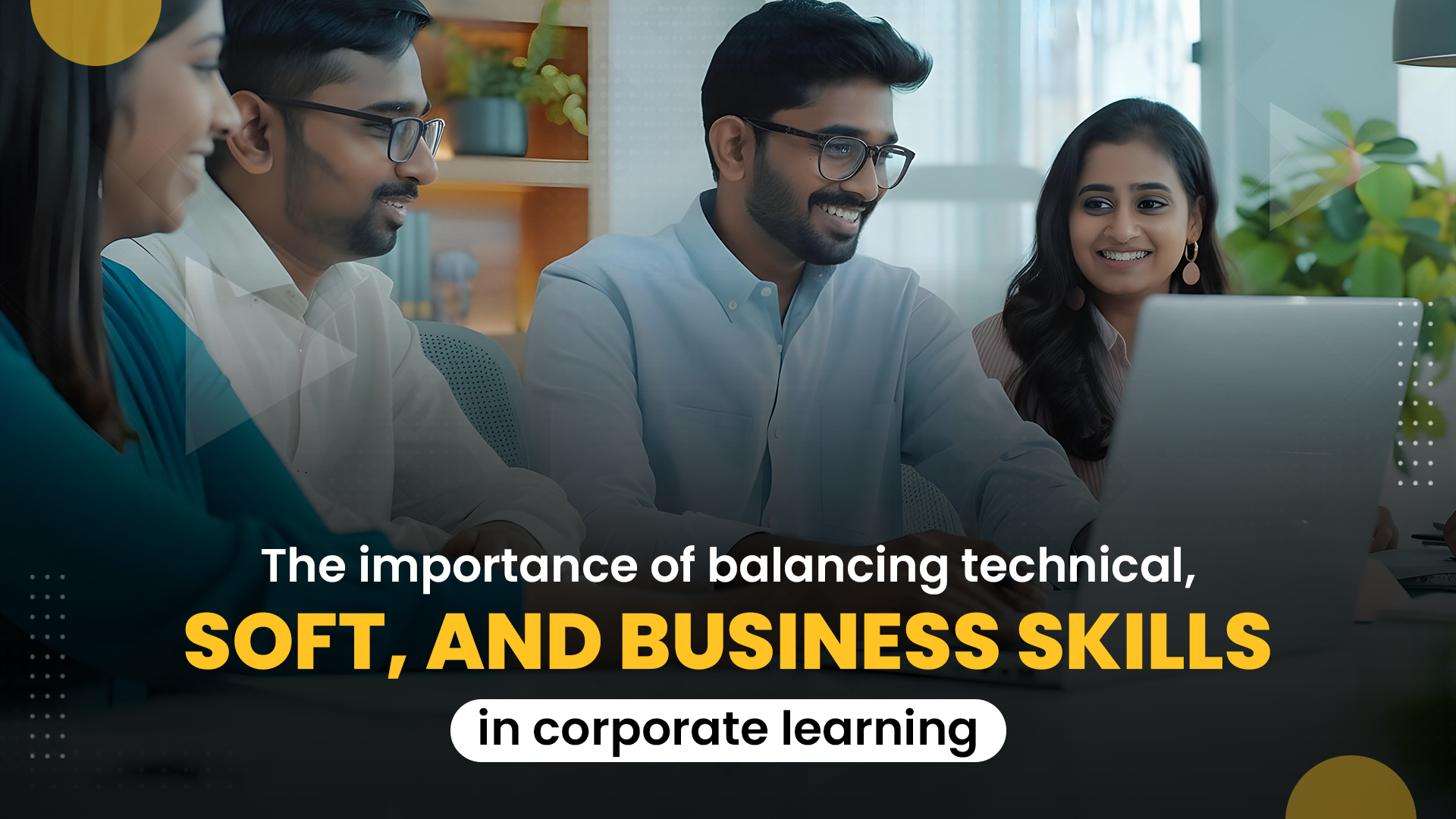
In a business environment marked by rapid technological advancements, skill obsolescence, and fierce competition, organizations are facing an unprecedented need to upskill their workforce. According to a 2024 McKinsey report, 87% of global companies say they already have or expect to have a skills gap in the next few years – particularly in areas affected by AI, automation, and digitalization (McKinsey, 2024). The pressure is real. But many corporate learning programs fail to deliver measurable business impact because they isolate technical training from soft skills and business acumen.
So, what’s the solution? It lies in integrating these three essential skill domains within corporate training programs. When done right, this approach doesn’t just upskill individuals – it transforms organizations.
Why Skills Must Intersect, Not Compete
Corporate learning programs have long focused on siloed skill development. Technical training is often prioritized, given its immediate relevance to job performance. However, according to a 2023 LinkedIn Workplace Learning Report, 89% of L&D professionals agree that building soft skills is just as important. Still, most programs lack the structural framework to integrate these diverse skills meaningfully.
Let’s break it down:
Technical skills solve immediate problems—coding, data analysis, equipment operation.
Soft skills like communication, empathy, and adaptability drive collaboration and innovation.
Business skills such as financial literacy, market awareness, and strategic thinking ensure alignment with organizational goals.
Treating them separately ignores how real work happens. In reality, employees need to synthesize all three to make decisions, lead teams, and drive impact. That’s why the most future-ready corporate training programs are built on a three-pronged skills strategy.
Real-World Success: From Operators to “Mini-CEOs”
Consider the case of a manufacturing firm that transformed its operations by designing a “mini-CEO” capability program. The initiative prepared plant operators not just to handle machinery but to lead end-to-end operations. The curriculum combined:
Technical mastery in plant systems
Soft skills like leadership and team influence
Business acumen including budgeting and strategic decision-making
The result? A new generation of operators who could think strategically, execute effectively, and rally teams. This multidimensional model of learning created measurable improvements in performance, plant efficiency, and talent retention—proving that corporate learning programs rooted in integration truly work.
Start with the Business Problem, Not the Skill List
Too often, corporate training programs start with a checklist of skills to teach, rather than a business challenge to solve. The better approach? Reverse-engineer learning from desired business outcomes.
Ask yourself:
What is the specific business problem?
What are the key behaviors that would solve it?
What technical, soft, and business skills enable those behaviors?
Let’s say your organization is launching an AI product. Success demands more than technical knowledge of AI tools. It requires project managers who can communicate cross-functionally, adjust plans on the fly, and tie product milestones to strategic business goals.
Use stakeholder interviews, performance data, and observation to uncover hidden skill gaps. Then, design your corporate learning programs to address these needs holistically. Role-plays, simulations, and cross-functional projects offer powerful, realistic practice grounds where skills are applied in unison.
Scaling Learning Without Sacrificing Depth
Digital learning platforms are making it easier to scale holistic training. Tools like Uplimit and FranklinCovey now allow companies to deliver interactive, role-specific, and measurable experiences to thousands of learners.
These platforms support:
- AI-driven feedback loops for communication and leadership exercises
- Simulations that mimic real-world challenges
- Peer-to-peer learning for soft skill reinforcement
Moreover, automated sentiment analysis tools help quantify improvements in soft skills, such as tone in written feedback or empathy in spoken interactions. That’s a game-changer in measuring ROI for corporate training programs – especially when combined with KPIs like employee performance, retention, or promotion rates.
According to Deloitte’s 2023 Human Capital Trends report, organizations that invested in integrated learning saw 29% higher employee performance and 22% greater business agility (Deloitte, 2023).
Measuring What Matters: Skill Impact, Not Just Completion Rates
Effective corporate learning programs are not just about course completion rates or quiz scores. They must be measured by the impact on business outcomes. Did project timelines improve? Did customer satisfaction rise? Were more employees ready to step into leadership roles?
Use metrics like:
- Pre/post assessments tied to key role capabilities
- Business KPIs linked to employee behavior
- Long-term tracking of performance improvement or promotion rates
When integrated skills drive observable outcomes, it becomes easier to justify continued investment in corporate training programs and secure buy-in from leadership.
The Road Ahead: Building the Workforce of the Future
The workforce of tomorrow will not be built on technical competence alone. It will rely on the seamless integration of deep expertise, human connection, and business strategy. Organizations that ignore this triad risk falling behind.
To succeed, businesses must:
- Reframe corporate learning programs as strategic enablers, not support functions
- Design training around role-specific challenges and desired business outcomes
- Deliver learning through practice-rich, real-world applications
Invest in scalable, data-driven platforms that support integrated development
Ultimately, the goal of any corporate training program should be to build a workforce that can adapt, lead, and innovate – no matter what the future brings.
Build a Workforce Ready for the Future of Workplace
At MARG Business Transformation, we design and deliver integrated corporate learning programs that go beyond traditional training. Our approach brings together technical expertise, durable soft skills, and business acumen – tailored to your organizational goals. From leadership journeys to role-specific capability building, our corporate training programs equip your people to perform, lead, and grow.
Let’s redefine learning for impact. Reach out to us today to build a workforce ready for the challenges and opportunities – ahead.
